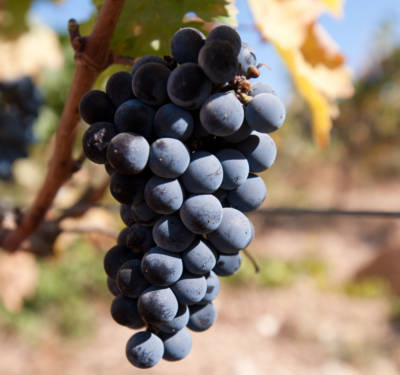The therapeutic grapes
Grape leaves show therapeutic potential which may vary according to the climate they are grown in.
Published online 30 June 2015

Grape leaves - or vine leaves - are popular in many Mediterranean diets.
© Ryan Rodrick Beiler / Alamy
Two grape varieties found in Palestine have therapeutic potential due to their anticancer and antimicrobial properties, according to new research published recently in the journal QScience Connect1.
Grape leaves are consumed widely throughout the Middle Eastern region. Such food products contain polyphenols, vitamins, minerals, carbohydrates and dietary fibre that are known to have positive health effects, and contribute to making the Mediterranean diet among the healthiest in the world.
Grapes contain numerous classes of phytochemicals, in particular flavanols in leaves, anthocyanin in berries, and various studies suggest that these compounds have antioxidant, anticancer, and antimicrobial properties.
Amanie Abed of Birzeit University and her colleagues wanted to study the therapeutic potential of grape leaf extracts. They collected Shami and Baituni grape leaves, from the arid Dahria and the temperate Beit Omar regions, and shock froze them using liquid nitrogen. The leaves were then ground into powder using a pestle and mortar and the researchers dissolved the plant extract preparations before adding each one to lung cancer cells and normal muscle cells.
They found that Shami leaves from Beit Omar had a cytotoxic effect and inhibited the proliferation of lung cancer cells, whereas leaves from Baituni grapes collected from both regions were ineffective. Both types of leaf extracts from both locations also exhibited antioxidant properties.
Baituni leaves collected from Dahria, on the other hand, effectively inhibited the growth of Staphylococcus aureus and, to a lesser extent, Pseudomonas aeruginosa—bacteria that cause diseases in humans and animals, but were ineffective against Listeria monocytogenes, Salmonella typhimurium and Escherichia coli.
These results suggest that the potential therapeutic effects of Shami and Baituni grape leaves may vary depending on whether they are collected from a temperate or an arid region due to their exact phytochemical composition.
The finding that Shami extracts from the temperate region exhibit anticancer activity, whereas Baituni leaves grown in the arid region had mostly antimicrobial activity suggests that the amount of annual rainfall influences the anticancer and antimicrobial properties of grape leaf extracts, and opens up new avenues of research into how they exert their effects.
“The grape leaves collected from the two regions gave opposing results which indicate the effect of environment on the phytochemical composition of the varieties,” says Abed. “The next step is to assess the exact phytochemical differences that gave each variety its therapeutic activity. This may assist in the future the discovery of cures for cancer and other diseases.”
Reference
Abed, A. H., Harb, J., Khasib, S. & Saad, B. In vitro assessment of cytotoxic, antioxidant and antimicrobial activities of leaves from two grape varieties collected from arid and temperate regions in Palestine. QScience Connect 2015, 4 (2015). | article
DOI: 10.1038/qsh.2015.67

